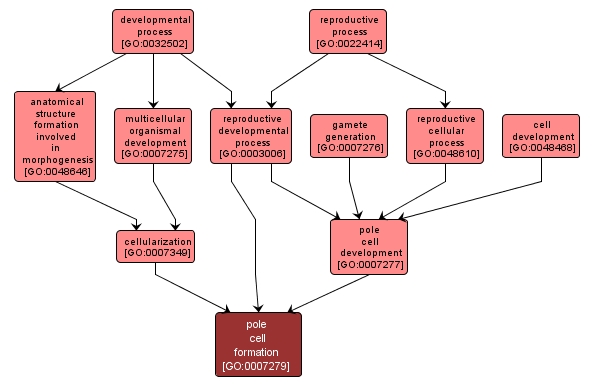GO TERM SUMMARY
|
| Name: |
pole cell formation |
| Acc: |
GO:0007279 |
| Aspect: |
Biological Process |
| Desc: |
Formation of a small group of cells (pole cells) at the posterior pole of the insect blastula. They are the first cells to cellularize after the arrival of nuclei at the end of the syncytial blastula stage and are the precursors to the insect germ cells. |
|

|
INTERACTIVE GO GRAPH
|














